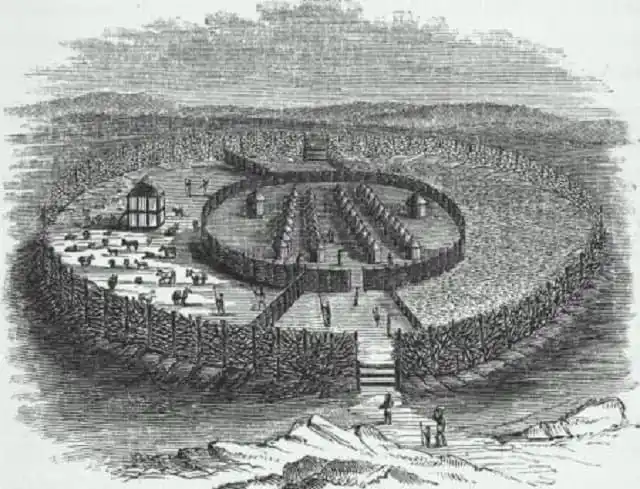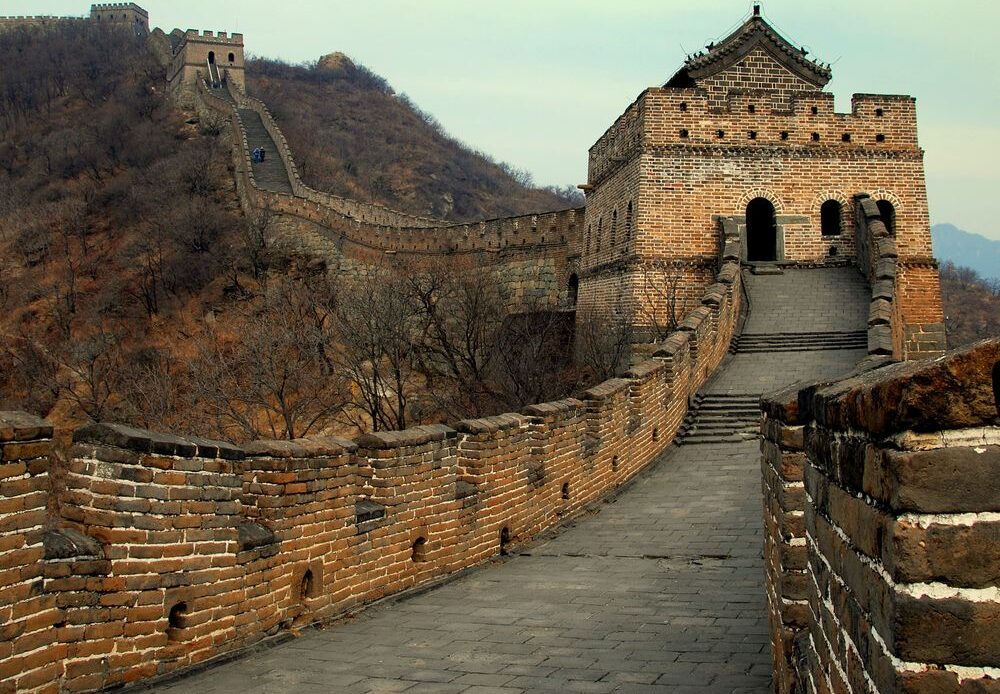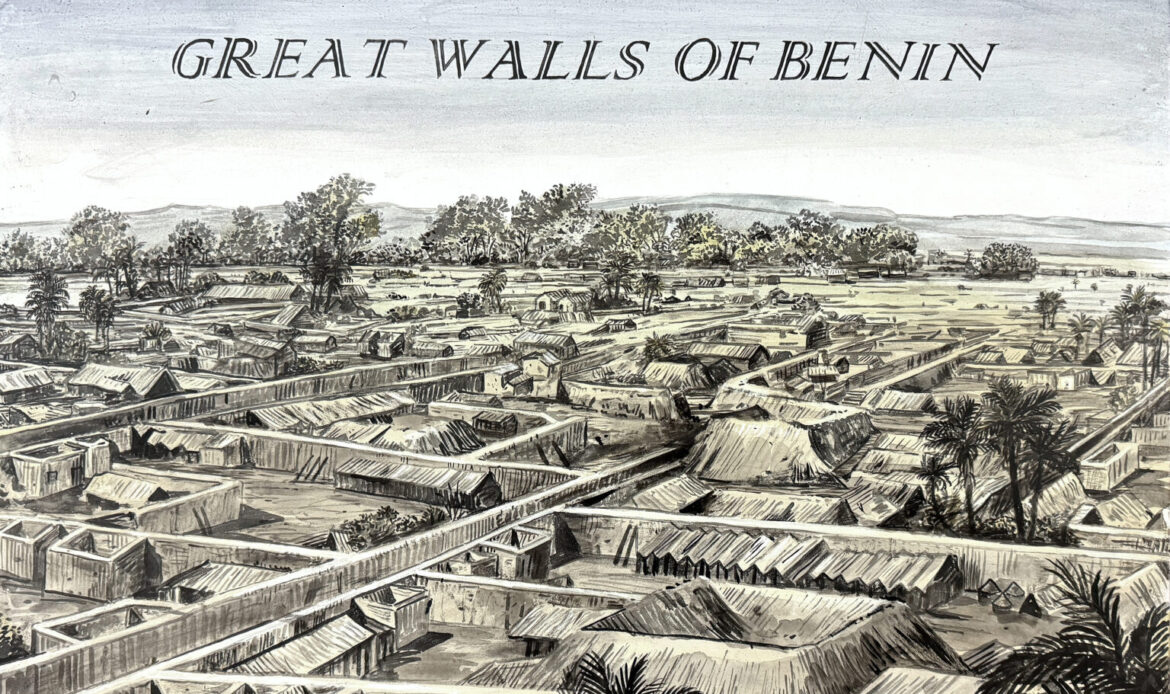
Beneath the shadows of history lies a story of innovation, resilience, and cultural pride—the story of the Great Wall of Benin. This extraordinary feat of engineering, often overshadowed by more globally recognized landmarks like the Great Wall of China, stood as a symbol of one of Africa’s most powerful empires. Built by the Edo people in what is now modern-day Nigeria, this wall was not merely a structure but a testament to an entire civilization’s mastery of engineering and their determination to safeguard their identity and independence.
Let’s uncover the hidden story of the Great Wall of Benin. This marvel once rivaled the greatest architectural achievements in the world but now stands as a fragmented reminder of Africa’s rich heritage and the forces that sought to erase it.
A Monumental Undertaking: Building the Great Wall of Benin
The Great Wall of Benin, also known as the Edo Wall, was constructed between the 13th and 15th centuries during the reign of Oba Esigie, a revered king of the Benin Empire. Stretching approximately 16,000 kilometers (9,900 miles), this intricate network of walls and earthworks encircled the kingdom, defining its territorial boundaries and showcasing its might.

The wall’s construction was nothing short of monumental. Historians estimate that the project required an astounding 150 million man-hours of labor, involving thousands of skilled workers over generations. The materials used—earth, wood, and stone—were carefully combined to create a durable structure harmonizing with the natural environment. But this was more than a functional barrier; it was a work of art. The wall’s design incorporated advanced engineering techniques, including a sophisticated system of ditches and banks that enhanced its defensive capabilities. These earthworks were not random piles of dirt but carefully planned constructions demonstrating the Edo people’s expertise in combining form and function.
Read: UNESCO World Heritage Sites in Nigeria
The Wall’s Multifaceted Role: Defense, Culture, and Power
The Great Wall of Benin was far more than a defensive structure. While its primary purpose was to protect the kingdom from external threats and invaders, its significance extended into the cultural and political realms.
As a physical barrier, the wall deterred enemies and preserved the kingdom’s sovereignty. Its sheer size and complexity conveyed a message of power to neighboring regions, establishing the Benin Empire as a formidable force in West Africa. But the wall’s symbolic value was equally profound.
The carvings and sculptures embedded in the wall reflected the artistic and spiritual values of the Edo people. They depicted stories of gods, heroes, and historical events, creating a living archive of the kingdom’s identity. In this way, the wall served as both a shield and a storyteller, protecting the kingdom’s people and its cultural essence.
A Tragic Loss: The Destruction of the Wall
Despite its grandeur, the Great Wall of Benin faced an abrupt and tragic end in 1897. During a punitive expedition, British forces invaded the Benin Empire, destroying the wall and looting the kingdom’s treasures. This act of violence marked the beginning of the empire’s decline and the erasure of one of Africa’s greatest architectural achievements.
The destruction of the wall was more than a physical loss; it was an assault on the identity and heritage of the Edo people. What had once been a symbol of strength and independence was reduced to rubble, and the cultural stories etched into its surface were scattered or lost forever.
Today, only fragments of the wall remain in Benin City, Nigeria. These remnants offer a glimpse into the past, serving as a solemn reminder of the empire’s resilience and the devastating impact of colonialism.
Comparing Giants: The Benin Wall and the Great Wall of China

Inevitably, comparisons arise between the Great Wall of Benin and the Great Wall of China, two of human history’s most impressive architectural feats. While the Great Wall of China is recognized as the longest wall ever built, the Great Wall of Benin was once considered the largest artificial structure on Earth due to its expansive network of earthworks.
The two walls served similar purposes—defense, boundary definition, and cultural expression—but they differed in their construction and legacy. The Great Wall of China was built primarily with stone and brick, whereas the Great Wall of Benin relied on earth, wood, and stone, reflecting the resources and techniques available to the Edo people.
A common myth suggests that the Great Wall of Benin was long enough to circle the United States three times. While this exaggeration adds to its mystique, the wall’s actual length—16,000 kilometers—is still a staggering achievement and a testament to the ambition and ingenuity of the Benin Empire.
Read: Exploring Colonial History: Tours and Sites in Africa
Why the Great Wall of Benin Matters
The Great Wall of Benin poignantly reminds us of Africa’s contributions to global heritage and the destructive forces of colonialism. Preserving its remnants is not just a historical obligation; it is a moral imperative to honor the ingenuity, resilience, and artistry of the Edo people.
Efforts to document conservation projects and global awareness initiatives can help ensure that the wall’s story is not forgotten. Moreover, celebrating the Great Wall of Benin challenges narratives that have long marginalized African achievements, highlighting the continent’s rich and diverse cultural heritage.
A Symbol of Resilience and Pride

Despite its tragic destruction, the Great Wall of Benin endures as a symbol of resilience and pride. Its remnants tell a story of a civilization that valued creativity, community, and independence. As we uncover and share its history, we honor the legacy of the Benin Empire and remind ourselves of the importance of preserving cultural heritage for future generations.
The Great Wall of Benin invites us to rethink history and question whose stories are told and left behind. It challenges us to celebrate achievements from all corners of the world and to ensure that no marvel of human ingenuity is ever forgotten again.
What other hidden stories have inspired you? Share your reflections and help reclaim the histories that deserve to be told.
